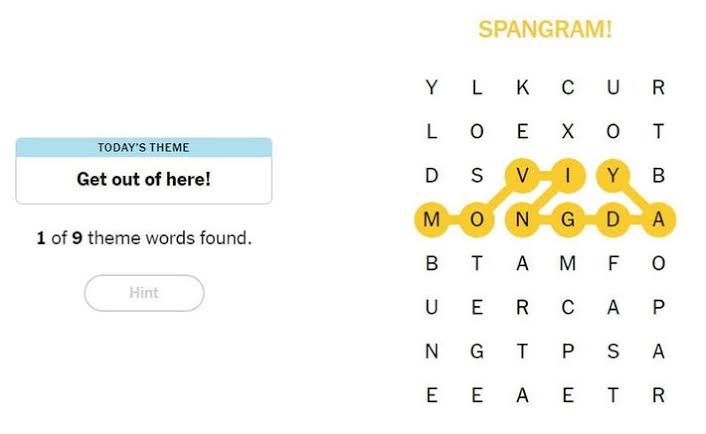Introduction
In the vast landscape of beauty, design, and innovation, the concept of strands hint has become a phrase with multiple applications across various fields. Whether you’re an enthusiast in hairstyling, digital design, or even scientific research, understanding its core concepts can be incredibly valuable. This guide will provide a thorough exploration of what this term means, how it’s used, and why it matters.
In this article, we’ll cover everything you need to know about this concept, including its applications, practical tips for leveraging its potential, and insights into why this knowledge is becoming increasingly relevant.
Understanding the Concept
To grasp the idea of strands hint, it’s important to break down the individual terms. A “strand” generally refers to a long, thin line or thread-like object, applicable in various contexts such as hair, fiber, or even graphical elements. The term “hint” suggests a subtle indication or suggestion. Therefore, the phrase refers to the guidance or influence one might provide when working with strands—be it in hairstyling, digital design, or scientific inquiry.
Applications in Hairstyling
One of the most common areas where this concept is applied is in hairstyling. Hair professionals often use subtle hints to manage strands for creating specific looks. Here are a few practical examples:
- Creating Soft Curls: Stylists guide the direction of curls for a natural, effortless look. By considering how each strand behaves, they achieve a cohesive style. For instance, when curling hair, a stylist may use a flat iron or curling wand and provide a hint on how each section should be wrapped to achieve the desired curl pattern. The end result is a look that flows naturally and complements the client’s features.
- Highlight Placement: When coloring hair, the strategic placement of highlights involves suggestions for where the light should hit, creating depth and dimension. The stylist can use techniques like balayage or foiling, which require careful attention to how the dye interacts with each strand. This method allows for a more customized look that enhances the hair’s natural movement.
- Layering Techniques: For those looking to add volume or movement, layering often requires careful consideration of how individual strands fall and interact. A stylist might employ point cutting or slide cutting techniques to ensure the layers blend seamlessly. This approach provides a soft, textured finish, allowing the hair to move freely.
Insights for Digital Design
Beyond the beauty industry, this concept finds relevance in digital design. Graphic designers often work with lines, threads, or strands when creating intricate patterns or compositions. Here’s how it can be applied:
- Vector Art: In vector graphics, artists can guide the flow of lines, creating smoother transitions and more natural curves, which results in visually pleasing designs. Using software like Adobe Illustrator, designers can manipulate anchor points and control handles to create fluid shapes that are aesthetically appealing.
- Typography Design: Subtle adjustments in typography can ensure readability while maintaining aesthetic appeal. Modifying line thickness and curvature contributes to an engaging layout. Designers often use strands hint techniques to make typefaces that not only look good but are also easy to read across various platforms.
- 3D Modeling: For 3D artists, guiding the rendering of complex shapes involves a keen eye for detail, particularly when working with fine lines or intricate patterns. Techniques such as edge loops and polygon modeling allow artists to maintain control over how strands or lines will appear in the final render. This attention to detail ensures that the model is both realistic and visually compelling.
Scientific Perspectives
In scientific fields, especially molecular biology, the idea of providing subtle guidance can also be relevant. It’s used metaphorically to describe how strands, such as DNA or protein chains, are influenced in their structure and function. For instance:
- DNA Replication: The process of copying genetic material involves an understanding of how molecular strands guide replication, which can impact genetic outcomes. Researchers study the mechanisms that dictate how DNA strands unwind and replicate to ensure accurate genetic transmission.
- Protein Folding: Researchers analyze how strands fold and how environmental factors (like temperature or pH) influence protein structure. Understanding these processes is crucial for developing treatments for diseases. For example, misfolded proteins can lead to various disorders, and insights gained from studying these strands can inform therapeutic strategies.
The Role of Strands Hint in Modern Trends
The notion of providing subtle guidance is becoming a trendsetter in both fashion and technology. Its importance lies in the ability to influence and guide for more refined outcomes. Here are a few ways these principles are shaping current trends:
- Sustainable Fashion: In fashion, designers are increasingly attentive to how strands interact within fabrics. This attention to detail helps create more eco-friendly and durable clothing. Brands are now focusing on how the arrangement of fibers affects the overall sustainability of their products, leading to innovations in fabric technology.
- AI in Design: Artificial intelligence is being used to analyze and suggest improvements in design. This technology helps achieve a polished look by providing automated suggestions for adjustments. For instance, AI algorithms can analyze patterns and make recommendations for layout changes, ultimately guiding designers toward more effective compositions.
- Innovative Hair Care Products: New hair care products are being developed to enhance the natural flow of hair strands. These innovations guide hair into healthier patterns, leading to more manageable styles. Products that focus on strand health—like serums, masks, and conditioners—often emphasize how to care for and style hair while maintaining its natural integrity.
Practical Tips for Effective Usage
Whether you’re a hairstylist, a digital artist, or a scientist, mastering the guidance of strands can elevate your work. Here are some practical tips for effective application:
- Focus on Details: In any field, the key is to concentrate on small details. For hairstylists, this means observing how each hair strand behaves. For designers, it’s about the flow of lines and elements. Small changes can lead to significant improvements in the final result.
- Utilize Technology: Modern technology offers various tools that can assist in applying these concepts. Software like Adobe Illustrator or Blender helps refine lines and curves, while hairstyling tools enhance desired effects. Embracing new technologies can streamline your workflow and improve outcomes.
- Experiment and Innovate: Don’t hesitate to try different approaches. Experimenting with various techniques can yield surprising results. Whether in digital design or hairstyling, being open to new methods can foster creativity. Keep a journal to document your experiments and track what works best.
- Seek Feedback: In any creative endeavor, feedback from peers or clients can provide valuable insights. Don’t be afraid to ask for opinions on your work. Constructive criticism can highlight areas for improvement that you may have overlooked.
- Stay Updated on Trends: The worlds of hairstyling and design are ever-evolving. Stay informed about the latest trends and techniques through online courses, workshops, and industry events. Being aware of emerging styles can help you incorporate fresh ideas into your practice.
Addressing Common Misconceptions
Despite its growing relevance, several misconceptions exist regarding this concept. Let’s clarify a few of these:
- Exclusivity to Professionals: While advanced techniques can enhance professional work, they are not solely for experts. With practice, anyone can learn to apply these principles effectively. Tutorials and online resources make it easier than ever to acquire new skills.
- Need for Expensive Tools: High-quality tools can assist, but understanding the basics does not necessarily require costly equipment. Often, creativity and a keen eye for detail can suffice. Start with what you have and gradually invest in better tools as your skills improve.
- Complexity: Many may find the idea complex at first. However, with step-by-step practice, it becomes intuitive, making it a valuable skill across various applications. Break down techniques into manageable steps and practice each one before combining them.
The Future of Strands Hint
As we look ahead, the concept of strands hint is poised to become increasingly significant across various fields. Here are a few predictions about its future applications:
- Personalized Hair Care: With advances in technology, the hair care industry may move towards more personalized solutions. Using AI and data analysis, companies could provide recommendations tailored to individual hair types and styles, enhancing the effectiveness of hair products.
- Virtual Design Tools: The future of digital design could see more immersive tools that utilize augmented reality (AR) and virtual reality (VR). Designers might interact with 3D strands in real-time, allowing for more intuitive design processes and immediate feedback on their work.
- Biotechnology Innovations: In science, continued research into molecular strands may lead to breakthroughs in gene editing and synthetic biology. Understanding how strands hint at functional outcomes could inform new therapies and technologies that improve health outcomes.
Read also: TBG95: The Ultimate Online Gaming Experience
Conclusion: Embracing the Concept
Mastering the idea of providing subtle guidance in different fields can enhance your creativity and results. By applying the insights and practical tips shared in this article, you can unlock the potential of this concept in your work, whether in hairstyling, digital design, or scientific research.
As you continue to explore and practice these principles, you’ll discover how small hints can lead to significant transformations in your creative process. Embrace this art, and see how it can elevate your skills and outcomes. The journey of understanding strands hint is not just about acquiring knowledge—it’s about applying it effectively to produce outstanding results in your field.




